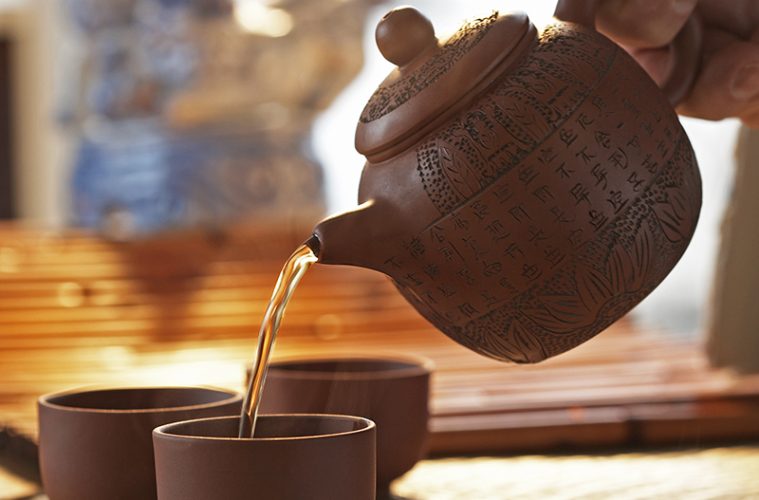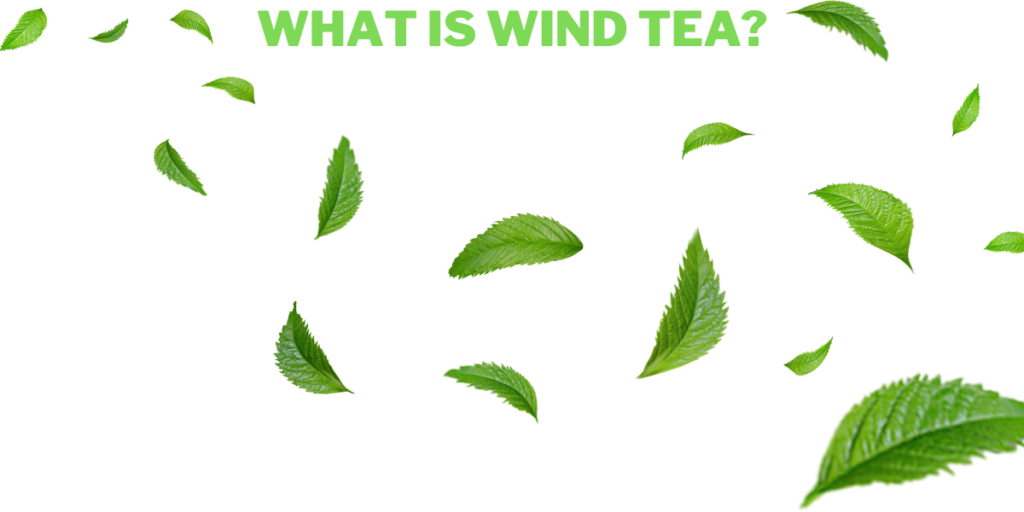In the world of teas, a universe of flavors awaits those adventurous enough to explore. Amidst the countless varieties, a unique tea blend known as Wind Tea emerges, beckoning those looking for something extraordinary. But what is Wind Tea? This question leads us to explore the depths of this special tea, a blend that’s not just about taste but an experience that transcends the ordinary.
From the ancient rituals of Eastern cultures to the bustling tea shops in urban cities, Wind Tea represents the unification of tradition with modernity. A cup of Wind Tea is more than just a beverage; it’s a philosophical encounter, a moment of mindfulness, and a gust of freshness that can make a routine day special.
As we delve into the essence of Wind Tea, we’ll uncover its definition, history, preparation techniques, health benefits, tasting notes, and everything else that makes this tea a unique offering in the vast landscape of teas. So, grab your favorite tea cup, get comfortable, and join us on this exciting journey!
Definition of Wind Tea
What is Wind Tea?
Wind Tea is not just a name; it’s a poetic metaphor for a blend of tea that seeks to capture the elusive essence of the wind. Like a gentle breeze that cools a warm day, Wind Tea provides refreshment and invigoration with its unique composition. Unlike traditional teas, which primarily rely on tea leaves from the Camellia sinensis plant, Wind Tea includes a selection of herbs and botanicals that imbue it with a distinctive character.
Comparison with Traditional Teas
To appreciate the uniqueness of Wind Tea, one must understand the traditional teas it’s often compared against.
- Green Tea: Renowned for its health benefits, green tea offers a subtle, grassy flavor. It’s rich in antioxidants and is often enjoyed as a daily beverage.
- Black Tea: Bold and robust, black tea is fully oxidized, giving it a strong flavor and deep color. It’s a classic choice for morning brews and afternoon teas.
- Herbal Tea: Not technically a tea, herbal “teas” are infusions of herbs, flowers, and other botanicals. They can range widely in flavor and often serve specific health purposes.
Now, consider Wind Tea as a harmony between these categories. It may contain elements of traditional tea leaves (green or black) but is also blended with herbs, possibly with a purpose like herbal teas.
Credit: lhasakarnak.com
Unique Features of Wind Tea
Wind Tea’s character is multifaceted:
- Flavor Profile: The combination of herbs and tea leaves results in a taste that is simultaneously familiar and novel. It’s a delicate dance of flavors that requires expert blending.
- Preparation Techniques: Crafting the perfect cup of Wind Tea can be art. Unlike standard teas, it may require precise temperature control, careful steeping, and even special equipment.
- Cultural Significance: Wind Tea often holds symbolic value, representing ideas of tranquility, harmony, or spiritual connection.
By any standard, Wind Tea is not ordinary. Its very name invites intrigue, and its taste confirms its exceptional nature. Whether a new discovery or an ancient tradition, Wind Tea is a tea like no other.
Read Also:
The History of Wind Tea
Origin and Cultural Significance
The roots of Wind Tea can be traced back to Eastern cultures, where tea itself holds a place of honor. But unlike other traditional teas, Wind Tea was not initially a beverage for everyday consumption. It was a ritual, a symbolic offering, a part of religious and philosophical practices.
The very name ‘Wind’ in Wind Tea is not accidental. In Eastern philosophies, wind is often considered one of the fundamental elements, representing change, freedom, and connection to the spiritual world. Wind Tea, then, was a way to commune with these aspects of existence. It was a bridge between the earthly and the divine.
Evolution of Wind Tea Over Time
Over the centuries, Wind Tea evolved from its sacred origins to become a more accessible beverage. However, the philosophy and symbolism it carried did not wane. They transformed, becoming subtler but remaining integral to the tea’s identity.
- Traditional Ceremonies: Even today, in some cultures, Wind Tea is prepared and consumed in specific ceremonies that echo its spiritual roots. These ceremonies can be complex and meaningful, guided by ancient rituals.
- Modern Interpretations: In contemporary times, Wind Tea has found a place in the tea markets of the world, often labeled as a specialty or gourmet blend. It is enjoyed not just for its taste but also for the unique experience it offers.
- Global Influence: With globalization, Wind Tea has spread beyond its Eastern origins. It’s now enjoyed by tea enthusiasts around the world, often as a part of a broader exploration of exotic and unique teas.
Wind Tea’s history is a rich tapestry of cultural evolution, spiritual significance, and global influence. It’s not merely a product of the past but a living tradition that continues to grow and adapt.
Impact on Tea Culture
Wind Tea’s influence on tea culture is profound. It challenges the boundaries of what tea can be, expanding our understanding of flavor, preparation, and meaning. It invites us to see tea not just as a beverage but as an experience, a journey, a connection to something larger than ourselves.
Its legacy is not confined to a particular region or time. Wind Tea is a universal call to explore, savor, and reflect. It reminds us that even in something as simple as a cup of tea, there can be depth, complexity, and beauty.

Credit: www.nshoremag.com
How to Prepare Wind Tea
Ingredients and Tools Needed
Wind Tea is an experience, and the journey begins with gathering the right ingredients and tools. The exact blend of Wind Tea may vary based on regional variations and personal preferences, but here’s a general guideline:
- Tea Leaves: A blend of green or black tea leaves or a specific type associated with Wind Tea in the region.
- Herbs and Botanicals: This may include mint, lemongrass, ginger, or other herbs that complement the tea’s character.
- Special Equipment: A tea infuser, teapot, or even a specialized Wind Tea brewer if available.
Preparing the Tea Blend
- Choosing the Base: Selecting the right tea leaves is crucial, as they form the foundation of Wind Tea’s flavor.
- Adding the Herbs: The choice of herbs should be aligned with the desired flavor profile. Experimentation can lead to personalized blends.
- Mixing Proportions: The ratio between tea leaves and herbs is essential. It may require some trial and error to find the perfect balance.
Brewing Wind Tea
- Water Temperature: Unlike traditional teas, Wind Tea might require a specific temperature, typically slightly cooler than boiling, for delicate flavors.
- Steeping Time: Steeping Wind Tea too long can overpower its subtle nuances; too short, and you may miss them altogether.
- Special Techniques: Some preparations of Wind Tea include unique methods such as whisking or gentle stirring, akin to ceremonies.
Serving Suggestions
Wind Tea is often best enjoyed in tranquility, served in delicate tea ware that complements its elegance. It can be paired with light snacks or enjoyed solo, allowing its flavors to be the star of the moment.
Health Benefits and Considerations
Much like other teas and herbal infusions, Wind Tea offers an array of potential health benefits, which might include:
Potential Health Benefits
- Antioxidant Properties: Depending on the blend, Wind Tea could be rich in antioxidants, promoting general well-being.
- Digestive Aid: Certain herbs like mint or ginger can enhance digestion, making Wind Tea a suitable after-meal beverage.
- Relaxation Effect: The ritual of preparing and sipping Wind Tea may provide mental relaxation, aligning with its symbolic connection to calmness.
Considerations and Precautions
While Wind Tea may offer health benefits, some considerations must be taken into account:
- Allergic Reactions: Know the herbs and botanicals in the blend to avoid potential allergic reactions.
- Pregnancy and Medical Conditions: Consult with healthcare providers if you have specific health conditions or are pregnant, as some herbs may not be suitable.
Wind Tea in Modern Culture
A Symbol of Elegance and Sophistication
In contemporary culture, Wind Tea has come to symbolize more than just a beverage. It’s a statement of elegance, a reflection of sophistication, and a celebration of the finer things in life.
Wind Tea as a Trend
With the rise in gourmet and specialty teas, Wind Tea has found a new generation of admirers. It’s not merely a product but a trend, often associated with artisanal tea houses, luxury brands, and even culinary innovations.
Cultural Influence and Popularity
- Eastern Influence: The heritage of Wind Tea continues to resonate in Eastern cultures, where it might be part of ceremonies, special occasions, or daily mindfulness practices.
- Global Appeal: Wind Tea’s reach now extends across the globe, attracting not just tea connoisseurs but also those seeking a unique cultural experience.
Conclusion
Wind Tea is more than just a name or a blend of tea leaves and herbs. It’s a story, a philosophy, a symbol, and an experience. From its sacred origins to its contemporary interpretations, it represents a journey through flavors, cultures, and meanings.
Whether you are a tea lover or simply someone seeking a new experience, Wind Tea offers a rich and rewarding exploration. It invites you to pause, to taste, to reflect. In a world often dominated by haste, Wind Tea is a gentle reminder that there’s beauty in slowing down, savoring the moment, and embracing the poetry of life.
Its wind-like essence is not confined to its taste but extends to its influence, its grace, and its timeless appeal. Wind Tea is not merely a tea; it’s a dance with the wind, a melody of nature, and a taste of tranquility.

